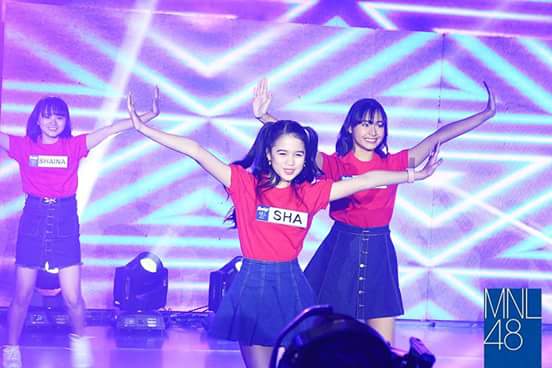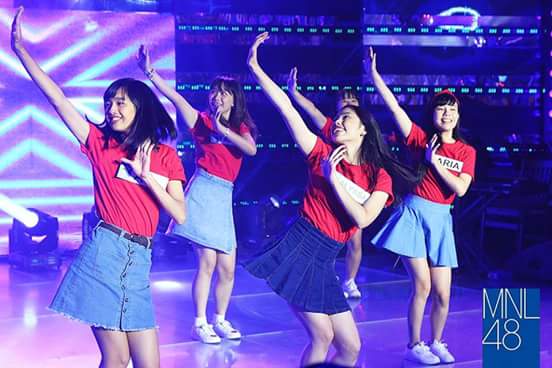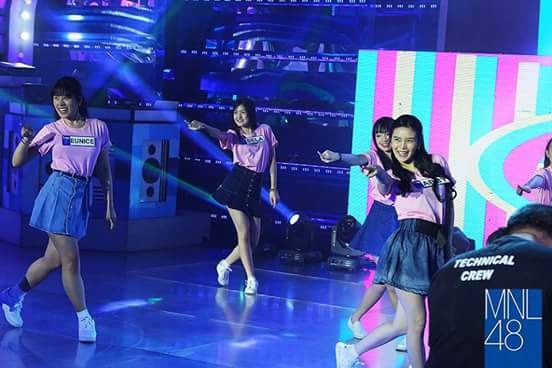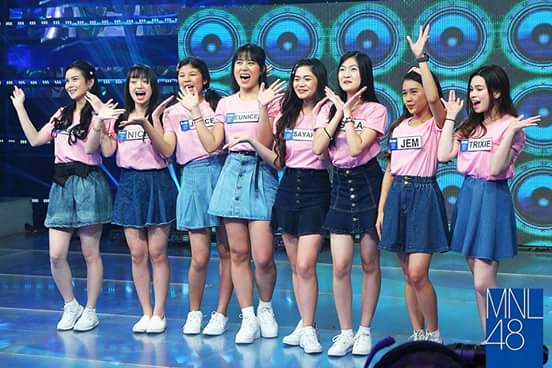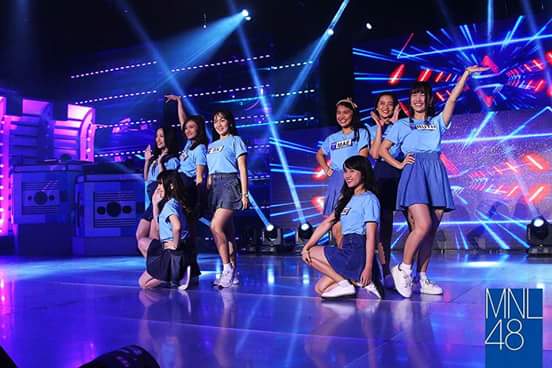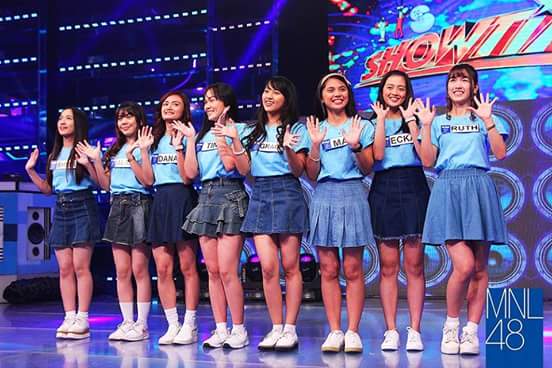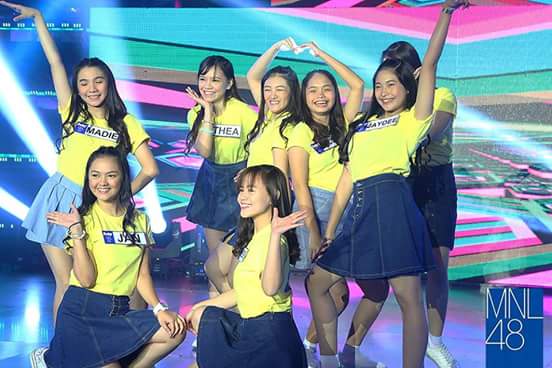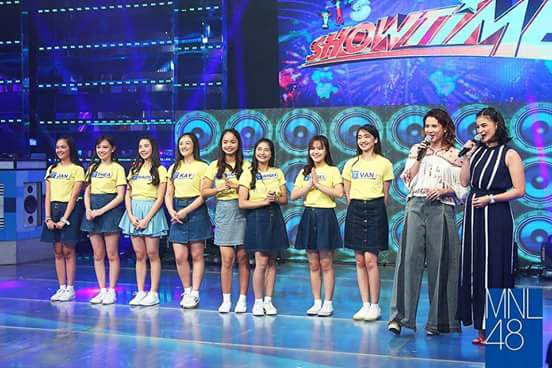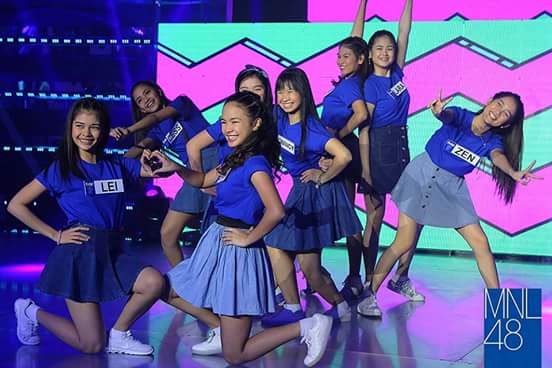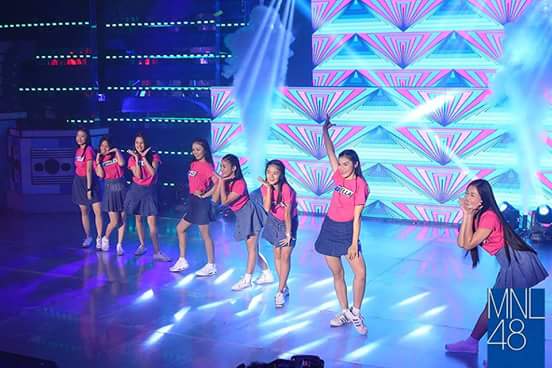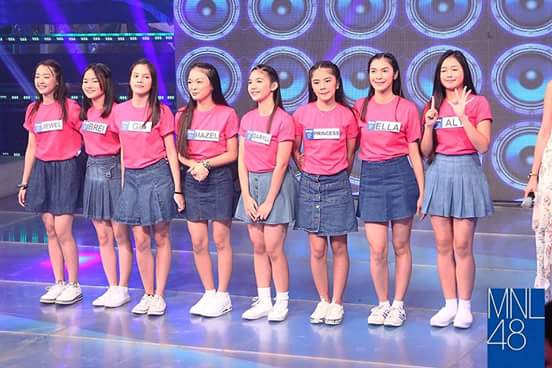It feels great to not write about a girl’s broken dreams. It’s “No Elimination” for MNL48 as we enter Holy Week, and I appreciate the breather. With the final month (April) of this whole process fast approaching, there would be more than my share of tears, misery and rage when the 48 girls are reduced to whatever number of members HHE will take for the first generation.
It’s been a long and bumpy ride to be honest and it’s affected everybody. This audition brought out the best – and the worst – in the fans (and some candidates) that there were times I wanted to have nothing to do with it for at least a week. There were times that it took me a while to process things. Not a good sign for someone who’s supposed to be covering them.
Anyway, since nothing really spectacular happened last Saturday (the bottom ranked girls did a performance, but that was it), I’ll talk about a topic that I forgot to mention last week. It was announced that the girls who will finish in the Top 7 will have a treat: they will go to Japan to train under AKS.
Training under AKS means the Top 7 will learn directly from AKB48’s own instructors and in their own facilities. This is a huge deal because not only will it provide a great opportunity for knowledge transfer, it gives the Top 7 (and the rest of MNL48) legitimacy as part of the 48 Group.
It’s no secret that many of the local wotas aren’t too happy with some of the girls in the upper ranks and one of their reasons is because these girls weren’t AKB48 fans, J-pop fans, or even just knowledgeable in the culture for that matter. Although I personally don’t believe a girl has to be a fan to “deserve” getting in (a word that has unfortunately, been abused throughout this whole audition), I also believe – in principle – that the girls should at least know what they’re getting into.
With that said, it would be hard to dispute the legitimacy of girls who trained under the auspices of AKS and performed alongside AKB48. Being a fan is one thing, being an idol under the 48 group is another and the two don’t always go together. Whether they will be credible idols remains to be seen, but that’s a question that will be asked of every idol group in the Japanese format wanting to break into the Philippine market.
The first generation of MNL48 will also have endorsement and recording contracts waiting for them, and will be performing daily (that’s a new one), not to mention have the chance to perform with some members of AKB48 and the other sister groups.
https://youtu.be/BoEJ-sPmUjc
Last week, at least two indie idol groups announced their existence (and in the case of one, their members). What is interesting is that these groups are composed of eliminated MNL48 applicants who decided to form their own group. As expected, many local wotas actually welcome these developments because the members are known among the local fandom.
My personal feeling is that this is a lot better than moping around, wallowing in bitterness at not being selected. While these groups will never be able to match MNL48 in terms of resources and infrastructure, it’s still a welcome step towards creating our own J-idol culture. Even 48/46 groups does not have a monopoly of the idol scene in Japan.
https://youtu.be/UKcMkFwKmF4
Now, you may ask: what’s an indie idol group and how different is it to MNL48? Well, I asked Admin Youko of FilWota – who has been a fan of AKB48 since 2006 (and of idols in general far longer) – the difference between the two, and for him the biggest difference between mainstream idols and the indie or – in his words, underground – idol is the venue where they perform. Underground idols usually perform in underground/basement locations, cheap live houses, and they rarely perform alone. They usually perform as part of an event that also features five or more other artists, perform around five to six songs each, and charge around 3000 yen per person for the ticket.
https://youtu.be/XjwfRZEkGWE
Because these girls perform “underground”, their crowd is unmistakably – almost exclusively – hardcore wotas. Because their crowd is smaller, they are also closer to their fans, some of them know and even call the names of their fans on stage. They also favor loyal fans than newer ones.
The music of an underground idol is also different. To unfamiliar ears, they all sound the same, but to people who’ve heard their fair share can tell the difference. Underground idols aslo have the freedom to “break the mold” and do something that is unusual by idol standards. And like other independent artists, underground idols normally have more control over their music, and most aspects of their image.
For performances, it’s usually held during the weekend since their fans do have work. They also have gravure DVDs, uchiwa (fan), and pins that are the staple among all idols today, regardless of their type. And they also hold other activities/events and gimmicks that you won’t see in a mainstream idol group.
Now, for all those who may not know, this is similar to how AKB48 started: they used to focus more on the hardcore wota crowd, they used to be more close to their fans through their “Idols you can meet concept” and the theater, and their first two singles were released under independent labels. However, it’s important to note that they’re not underground idols in the strictest sense of the term, because they do have their own theater where they perform regularly and without five other groups waiting at the sides, and they do have better resources than most. As their appeal became universal and their audience came to include non-wotas, their focus too became different.
The lure of mainstream success and its promise of greener pastures is the dream of any underground idol. But, as with any music industry, money considerations and politics are always an issue, and most underground idols don’t make it big, probably just enough to get even. AKB48 – with all the connections and support of producer Yasushi Akimoto – took years to hit mainstream (from 2005 to 2008 according to Youko). An underground idol might have great reputation among the wotas for being the “ideal” of what in idol is, but it’s only as good as the audience it can reach.
Part of the reason why it took AKB48 so long to have mainstream success is because idols come from a rather extreme part of Japanese pop culture that isn’t exactly “newbie” friendly. AKB48 had to adapt to attract more fans, they also had to change their image, conform to corporate expectations and – once they were on top – had to struggle to keep it. AKB48 still retains much of their roots, but being national idols means that there were things they had to give up, and prioritize some aspects more than others.
MNL48 is the child of this later AKB48: the AKB of the million sales, the AKB of the mainstream audiences. That’s the reason why their operator chose to take a risk and partner with a major network to try and get as much people as possible to learn about the group. MNL48 cannot afford to be an “underground idol” in a non-existent market. It’s all business at the end of the day, and with the emergence of these “indie” idols that were formed by wota for the wota, there’s more than enough to satisfy the truly hardcore.
I always thought that part of the reason why they’re bringing MNL48 isn’t just to earn money (although that’s probably the main thing), but to try and establish Japanese pop culture in the Philippines that can pave the way for Japanese businesses to consider doing business here. A local pop-culture scene that is more than just anime, cosplay, and the few scattered cover groups valiantly trying to get people to try out J-pop. An established market means more business opportunities. More opportunities means companies in Japan will take notice. That may mean more artists coming here, more merchandise making its way. So, in that regard, having indie idol groups might not be a bad thing because it helps making the market more robust by actually populating it. Don’t think of them as rivals, but as hopefuls who want to put their version of being an idol out for people to enjoy.
Parting Shot:
– It was announced in the MNL48 Online Update March 28, 2018 that one of AKB48’s choreographers – Moe Sensei – will be moving as MNL48’s choreographer. Here’s hoping we finally get to see the candidates perform to AKB48’s hits.



